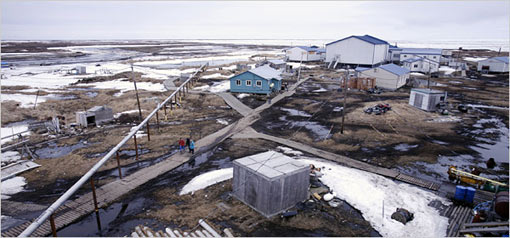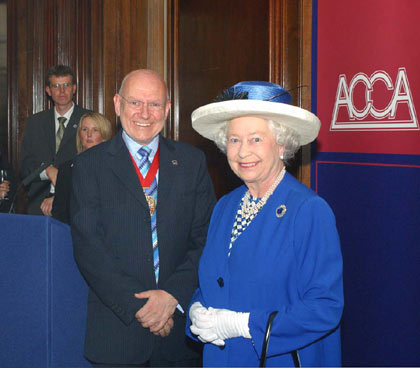You are hereHealth & Lifestyle
Health & Lifestyle
At top of Earth, Arctic ice shrunk by 25%, left islandlike ice cap surrounded by open water, 181 Alaskan villages face erosion
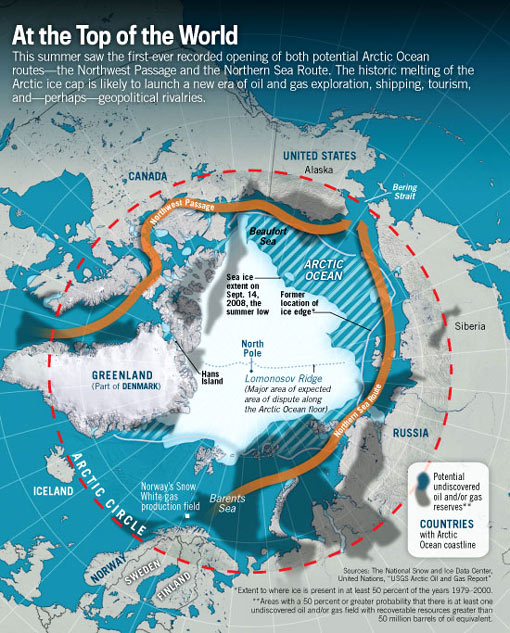
(quote)
This summer, for the first time, both the fabled Northwest Passage through the upper reaches of North America and the Northern Sea Route above Russia opened up, apart from drifting ice. Overall, the expanse of Arctic sea ice was the second smallest in the 30 years of monitoring (summer 2007 was the smallest), and that left an islandlike polar ice cap surrounded by open water. In just the past five years, summer ice has shrunk by more than 25 percent, and so has its average thickness. One consequence of this change is that much of the sun's heat formerly reflected back out to space by the ice sheets is now being absorbed, entrenching the warming process. The acceleration of the ice melt is outstripping earlier predictions of a basically ice-free Arctic summer by mid- or late century. NASA climate scientist H. Jay Zwally now anticipates that most of the Arctic will lose summer ice in only five to 10 years. "We appear to be going through a tipping point," he says.
Senseless overfishing - world's marine fisheries losing $50 billion each year

(quote)
The world's fishing fleets are losing billions of dollars each year through depleted stocks and poor management, according to a UN report. The World Bank and the UN Food and Agriculture Organization (FAO) calculate the losses at $50bn per year. Half the world's fishing fleet could be scrapped with no change in catch.

The report was launched at World Bank headquarters in New York and has been debated here at the World Conservation Congress in Barcelona, Spain. Entitled The Sunken Billions: Economic Justification for Fisheries Reform, it argues that reforming the way fisheries are managed could restore stocks and build profits. "There are two reasons why we are experiencing the huge loss," said Rolf Willman, a senior fisheries planning officer at FAO and one of the report's authors. "One is that global fish stocks are much lower than they could be, so it is harder to catch the amount of fish that we could. "If stocks were higher we could catch the same amount at lower cost. The second reason is that where fishing is poorly regulated, we have much greater harvesting capacity than we need," he told BBC News. read more »
Turning out the lights - light pollution squanders energy, raises cancer risks, disturbs wildlife and ecosystem

(quote)
The night is not what it was. Once, the Earth was cast perpetually half in shadow. Man and beast slept beneath inky skies, dotted with glittering stars. Then came fire, the candle, and the light bulb, gradually drawing back the curtain of darkness and giving us unprecedented control over our lives. But a brighter world, it is becoming increasingly clear, has its drawbacks. A study finding that breast cancer is nearly twice as common in brightly lit communities as in dark ones only added to a growing body of evidence that artificial light threatens not just stargazing but also public health, wildlife, and possibly even safety.
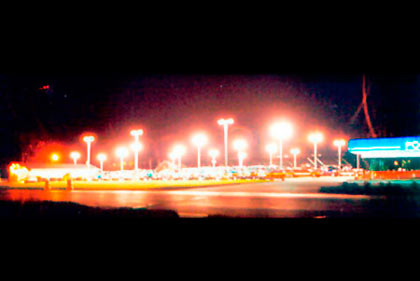
Those findings are all the more troubling considering that an estimated 30 percent of outdoor lighting - plus even some indoor lighting - is wasted. Ill-conceived, ineffective, and inefficient lighting costs the nation about $10.4 billion a year, according to Bob Gent of the International Dark-Sky Association, a nonprofit that aims to curtail light pollution, and it generates 38 million tons of carbon dioxide a year. read more »
37th Annual Albuquerque International Balloon Fiesta marks 225th anniversary of first manned balloon flight

(quote)
Launched in 1972, the Albuquerque balloon festival draws enthusiasts from all over the world. This year marks the 225th anniversary of hot air balloon flights, with participants representing 42 states and 24 countries. Ballooning has come a long way from the first "flying machines" in France in 1783, which flew a duck, a rooster and a lamb in a smoke-filled balloon. The first human passengers were carried 3,000 feet on November 21, 1783.

Amongst the most popular events is a mass ascension, in which all participants rise into the sky in two waves. During the Dawn Patrol, above, pilots take off before sunrise and appraise wind conditions for the others. The festival lasts nine days. This year it runs from October 4 through October 12. Albuquerque has a long association with ballooning, going back more than a century.

Because of a local wind phenomenon known as the "Albuquerque Box," the area is ideally suited to a balloon festival. In October of every year, the wind follows a predictable pattern, blowing northerly at higher altitudes and southerly at lower altitudes, allowing for a smooth navigation.
Getting worse: half of mammals in decline, 1 in 4 faces extinction; conservation can bring species back

(quote)
BARCELONA, Spain, October 6, 2008 (ENS) - The world's mammals are in the grip of an extinction crisis, with almost one in four at risk of vanishing forever, according to the latest scientific assessment revealed at the International Union for the Conservation of Nature's World Conservation Congress, which opened Sunday in Barcelona.
The new study conducted for the IUCN Red List of Threatened Species for the first time assessed all of the 5,487 mammals on Earth and found that at least 1,141 of them are known to be threatened with extinction. At least 76 mammals have become extinct since the year 1500.

The real situation could be much worse as 836 mammals are listed as Data Deficient. With better information, scientists may classify even more species as being in danger of extinction. "Within our lifetime hundreds of species could be lost as a result of our own actions, a frightening sign of what is happening to the ecosystems where they live," said Julia Marton-Lefèvre, IUCN director general. read more »
Revival of the electric car: against industry’s gloomy forecast, hybrid & electric cars light up Paris Auto Show

(quote)
Against a backdrop of generally gloomy sales forecasts and belt-tightening, a chorus of optimism rose from automakers at the Paris show as the technical hurdles of hybrids, plug-ins and electric vehicle development -- primarily involving the cost and capacity of advanced-chemistry batteries -- are gradually being overcome. "Two years ago nobody said an electric vehicle was even possible," said Pitt Moos, marketing manager for Smart USA. "Today everybody is saying, 'We're going to make one.' "

At the show, Smart -- the maker of those tiny two-seat city cars -- announced plans to build all-electric vehicles for Europe by the end of the decade. But it hasn't said what its intentions are for the U.S. market. "The challenge has always been the battery," Moos said. Compact, energy-dense lithium chemistry batteries for automotive applications are expensive and can be hazardous. "We have just in the past couple of months become comfortable about a method of making lithium batteries for cars," Moos said. "Now some people are starting to quote Obama: Yes, we can."
Queen Elizabeth II buys world largest wind turbine - towers over Big Ben, to light up thousands of British homes

(quote)
It's been a century or so since Britain ruled the waves, but Queen Elizabeth II will soon reign over the wind. Earlier this year the Crown Estate, which manages royal property worth $14 billion and controls the seas up to 14 miles off the British coast, agreed to purchase - for an undisclosed sum - the world's largest wind turbine.
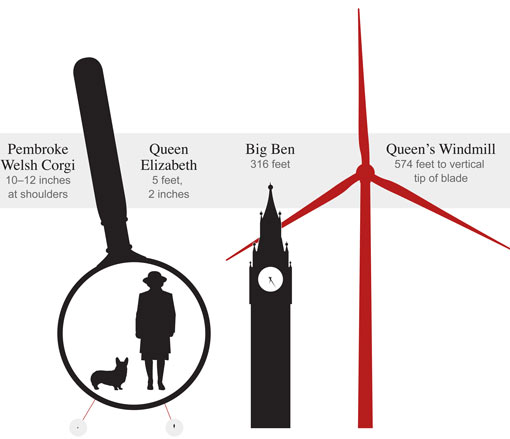
It's a 7.5-megawatt monster to be built by Clipper Windpower of Carpinteria, Calif. Now the Royal Turbine is getting even bigger: Clipper has revealed to Fortune that Her Majesty's windmill has been super-sized to ten megawatts, producing five times the power generated by typical big turbines currently in commercial operation. The giant's wingspan stretches the length of two soccer fields. At 574 feet, the turbine soars over Big Ben and roughly equals 111 Queen Elizabeths (the actual queen) plus one corgi stacked on top of one another.

